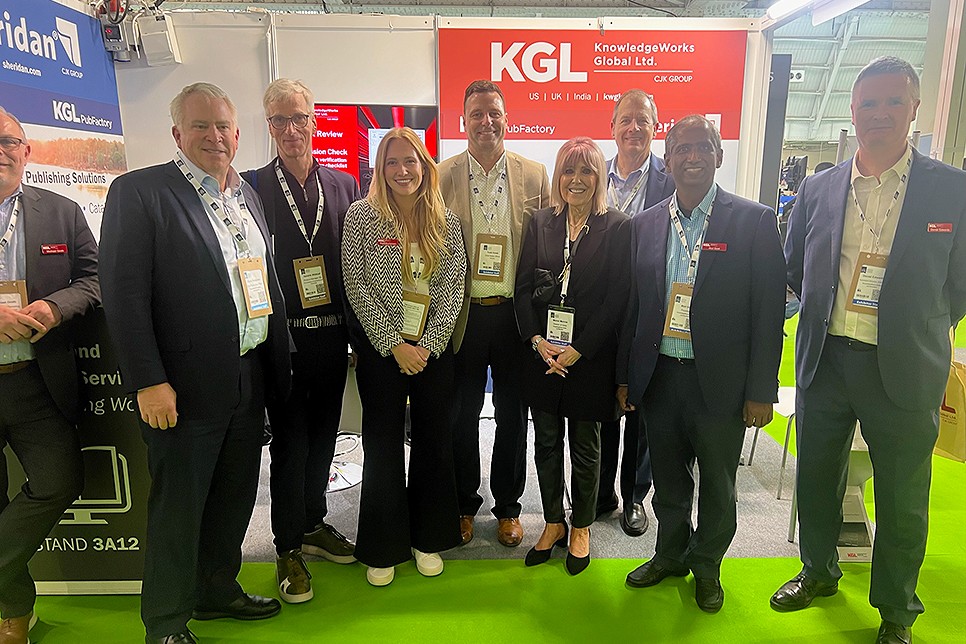The terms “access” and “scholarly journals” are often linked to Open Access publishing. Less often discussed—but still very important—are issues and challenges of making journal content accessible to the visually, cognitively, or otherwise impaired.
Guest blog by John Parsons
Peer-reviewed, scholarly journals are a specialized slice of the publishing universe. Worldwide, it is a $25 billion market. Unlike consumer and trade magazines, journals are not supported by advertising revenue, but rely on subscriptions, institutional funding, and/or open access funding mechanisms. Readership varies widely in size and scope, and includes students, journalists and government employees as well as researchers themselves. They are also delivered by a wide array of specialized digital platforms and websites.
What they do share with other publications is the assumption that their audience can read words and images on a page or screen. For the majority of journal readers, this poses few problems. However, for readers with visual or other impairments, content accessibility is a major concern.
Justifying Journal Content Accessibility
Some might argue, without foundation, that scholars qualified to consume peer-reviewed content are less likely to be impaired in the first place, making the number of affected users too low to justify the added costs. (If cost were the only issue, one Stephen Hawking in a journal’s potential audience would more than justify the cost of making scholarly exchange possible for disabled readers. Also, as was mentioned, scholars and researchers are not the only readers in the equation.)
In other words, one justification for accessibility is a moral argument. It’s simply the right thing to do. However, for most journals, this argument is moot. Government-funded research typically carries minimum accessibility requirements, such as those spelled out in U.S. Code Section 508.
Building content accessibility into a journal workflow need not even be a daunting financial question at all. Well-structured XML content and metadata has many benefits, of which accessibility is only one. (This will be the subject of another blog.)
Regardless of the reason, most journal publishers understand the why aspect of content accessibility. So, let’s focus on how best to do it.
Identifying the Pieces—WCAG 2.0, Section 508, and VPAT
To understand the scope of journal article accessibility, we need to know that it has two basic versions—a document (PDF or EPUB) and a webpage. These are similar in many ways, especially to a sighted person, but they have different accessibility requirements.
What each of these formats have in common are
-
accessibility metadata
-
meaningful alt text for images (including math formulas and charts)
-
a logical reading order
-
audible screen reading
-
alternative access to media content
Only two (EPUB and webpages) have potentially resizable text and a clear separation of presentation and content. (PDF’s fixed page and text size often can be problematic. But in areas where PDF is a commonly used format, notably healthcare, service providers can provide workflow mechanisms to remediate PDFs for Section 508 compliance.)
Webpages have the added requirements of color contrast, keyboard access, options to stop, pause, or hide moving content, and alternatives to audio, video, and interactive content. Most of these are covered in detail in the W3C Web Content Accessibility Guidelines (WCAG) 2.0 guidelines, many of which are federally mandated. Service provider solutions in this area include a Voluntary Product Accessibility Template (VPAT) for journal content. This template applies to all “Electronic and Information Technology” products and services. It helps government contracting officials and other buyers to evaluate how accessible a particular product is, according to Section 508 or WCAG 2.0 standards.
There are several “degrees of difficulty” when it comes to making journal articles accessible. Research that is predominantly text is the easiest, but still requires careful thought and planning. With proper tagging of text elements, clearly denoting reading order and the placement of section headings and other cues, a text article can be accessibility-enhanced by several methods, including large print and audio.
More difficult by far are the complex tables, charts, math formulas, and photographic images that are prevalent in STM journals. Here, extra attention must be paid to type size and logical element order (for tables). In the case of charts, formulas, and pictures, the answer is alternative or “alt” text descriptions.
Think of it as explaining a visual scene to someone who is blindfolded. Rudimentary alt text, like “child, doll, hammer,” would probably not convey the full meaning of a photograph depicting Bandura’s famous Bobo Doll experiment. Rather, the best alt text would be a more nuanced text explanation of what the images depict—preferably by a subject matter expert.
Automation in Workflow is Key
When Braille or even large print were the only solutions, journal content accessibility was not an option for most. All that changed, for the better, with the advent of well-structured digital content. Again, publishing service providers have done much to advance this process, and in many cases, automate it.
Not every issue can be automated, however. Making content accessible may involve redesign. For example, footnotes may need to be placed at the end of an article—similar to a reference list—to ensure continuity of reading. Other steps support the logical flow of content and reading order, semantic structuring for discoverability, inclusion of alt text descriptions for images, simplifying presentation and tagging of complex tabular data, and the rendering of math equations as MathML.
Journal publishers can facilitate this in part by selecting formats that are more accessible by nature. Articles published online or available as EPUB are accessible by default, although they need to be enhanced to meet all the requirements of WCAG 2.0. The gap is small and can be easily bridged by focusing on the shortcomings and addressing it in design, content structuring, and web hosting.
Many of the basic, structural issues of making journal content accessible can be resolved, more or less automatically, if the publishing system or platform enforces standardized metadata rules. Titles, subheads, body copy, and other text elements will have a logical order, and can easily be presented in accessible ways. For elements where knowledgeable human input is required (as with alt text), a good system will facilitate such input.
Accessibility is not just the right thing to do, for the sake of science. It is also an obtainable goal—with the right service provider.





